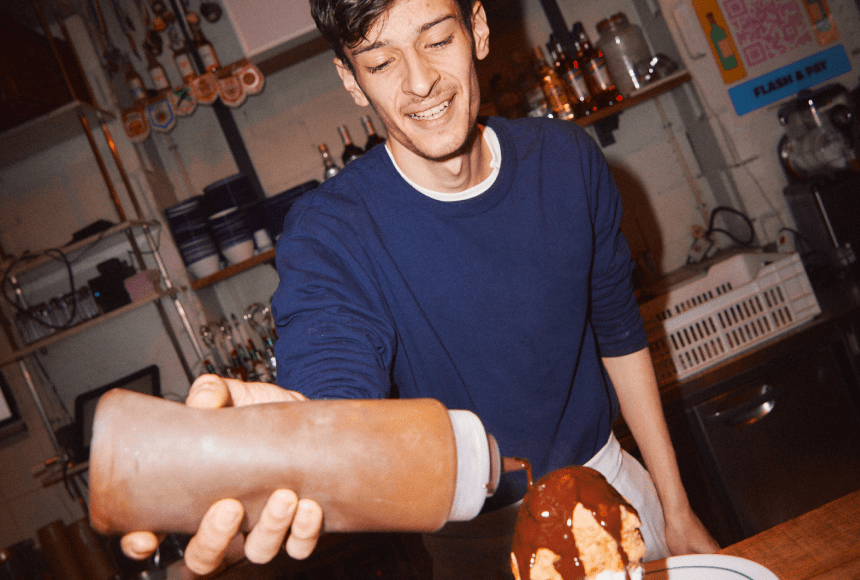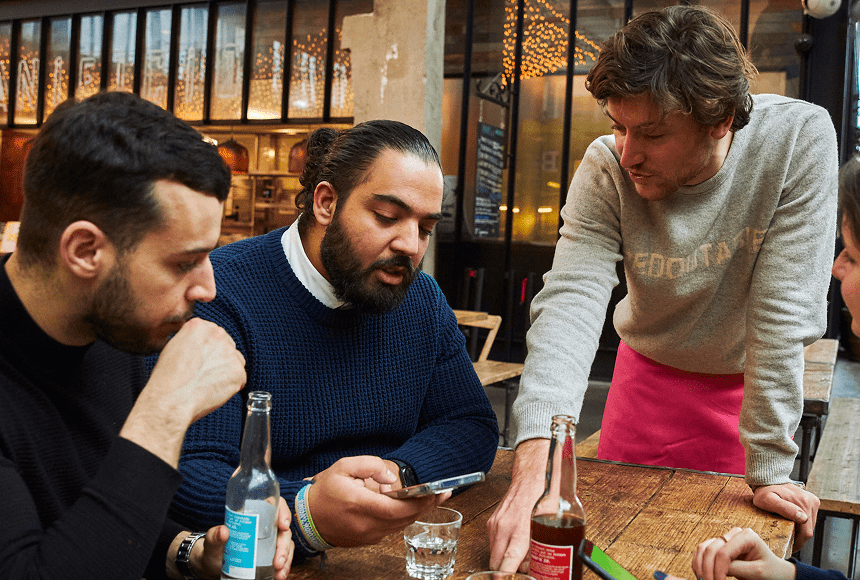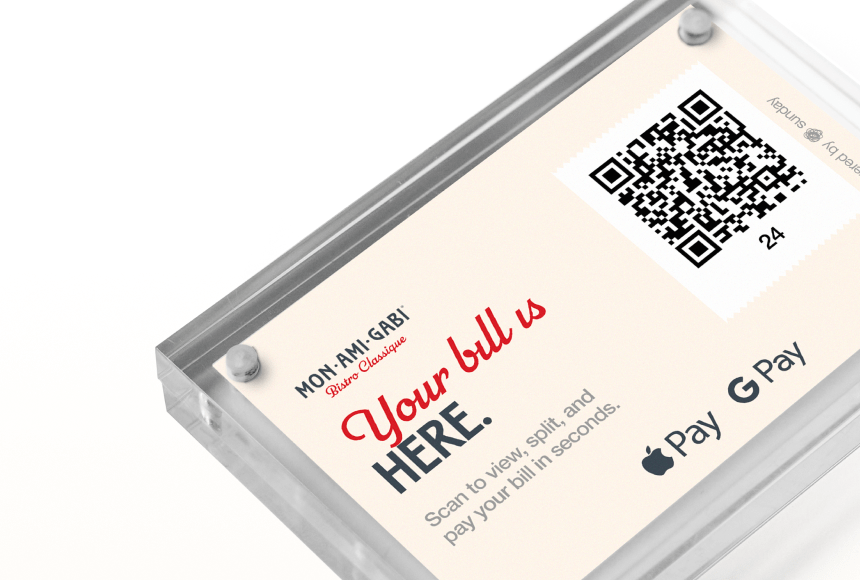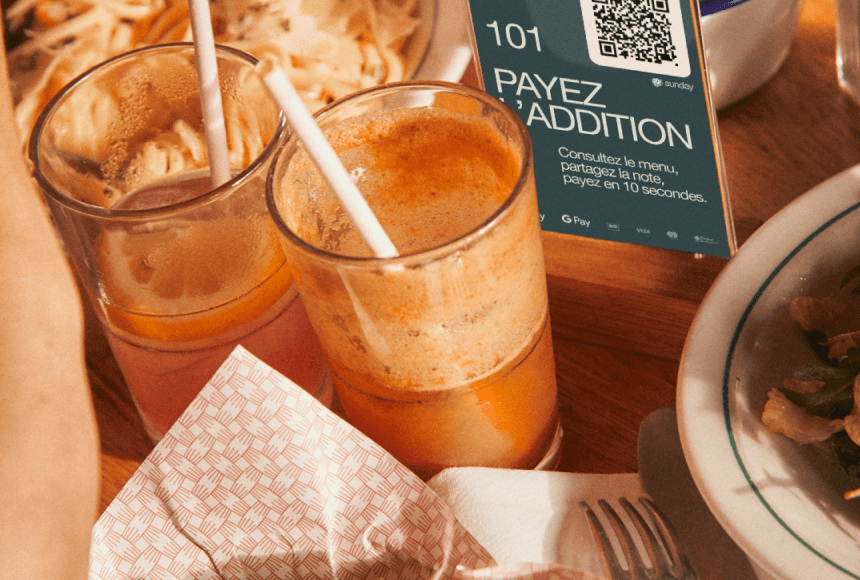
Elevating Hospitality Through Modern Gratuity Methods
Why Digital Tipping Is Changing the Game
Picture this: It’s a busy Saturday night, your restaurant is fully booked, and your staff is racing from table to table. At the end of the night, everyone scrambles to count tips, allocate shares, and close out. Meanwhile, guests might have left feeling uncertain whether they tipped enough—or if the money actually reached the people who served them best.
This is where digital tipping steps in. With more diners embracing contactless and QR-based payments, gratuities, too, are shifting away from cash or scribbled receipts. According to Restaurant Business Online, nearly half of US diners say they’re open to new technology for payment, including digital tipping (source). In short, digitized tips aren’t just about convenience or speed. They can actually elevate the entire dining experience by encouraging staff to provide top-notch, personalized service. Below, we explore exactly how digital tips can boost your customer satisfaction scores—and your bottom line.
1. Creating a Transparent and Fair Atmosphere
One of the biggest selling points for digital tipping is that it brings clarity to how gratuities are collected and distributed. In a traditional cash-based system, servers and back-of-house staff might feel uncertain about whether they’re receiving their fair cut—or suspect others might be forgetting to share pool tips. This anxiety can negatively affect morale and, ultimately, the way staff interacts with customers.
- Automated record-keeping: Each tip is tagged to a specific check and staff member—whether they’re a server, bartender, or part of the kitchen support team. This precise tracking reduces guesswork and fosters trust.
- Clear tip-sharing rules: If your restaurant uses tip pooling or partial pooling, a digital system can divvy up amounts automatically based on set percentages or hours worked. Everyone sees the process, minimizing resentment.
When employees feel they’re being treated equitably, their attitude toward guests brightens. They engage with diners more enthusiastically, assured that their hard work is recognized and rewarded accurately.
2. Freeing Staff to Focus on Guests, Not Calculations
Traditional tipping often involves busy servers rushing between tables, collecting receipts, and mentally totting up tips under time pressure. By the end of a shift, they may be frazzled—hardly the mindset that fosters warm, outgoing service.
- Less end-of-night chaos: Digitized tips remove the need to handle wads of cash, rummage for change, or cross-verify receipts. A streamlined system logs all tips in real-time, so staff can concentrate on finishing strong with their last tables.
- Focus on experience: When employees aren’t preoccupied with how they’ll sort tips after closing, they can give 100% to the people seated in front of them—checking in proactively, suggesting pairings, and ensuring a memorable experience.
This shift from tip-tracking to guest-centered service can create a more welcoming atmosphere. Diners sense that staff isn’t distracted or stressed, which translates into happier customers and, ironically, often leads to higher tips anyway.
3. Encouraging Real-Time Performance Feedback
Some digital tipping solutions allow servers and managers to see how gratuities are stacking up as the night goes on. This immediate insight can stimulate staff to up their game mid-shift if tips aren’t matching expectations, rather than discovering a shortfall only after closing.
- Motivation mid-shift: If a server notices their tip total lagging, they might refocus on thoughtful service—refilling drinks quicker or offering dessert suggestions.
- Healthy competition: Transparency can spark friendly rivalries. Servers might swap strategies on engaging guests, collectively elevating the entire guest experience.
The net effect is a restaurant floor that’s ever-adaptive. Staff strive to provide top-tier hospitality, fostering an ambiance diners will remember—and reward.
4. Aligning with Tech-Savvy Diners
These days, many guests don’t carry cash, or they prefer to scan a QR code to pay swiftly. By embracing digital tipping, you speak to their values and habits. This convenience can reduce friction, keeping guests in that positive “glow” of a great meal as they finalize the payment.
When a tip prompt pops up smoothly in the checkout flow—whether it’s 15%, 18%, 20%, or a custom figure—diners are more likely to tap a generous option if the overall experience has been stellar. And it’s all done without rummaging for bills or making them do mental math. The process feels integrated, simple, and user-friendly.
5. Ensuring Quick and Accurate Table Turnover
In bustling restaurants, table turnover can be the difference between a profitable night and one that barely meets the margin. If guests linger waiting for the check or there’s confusion about tipping, it can slow everything down, creating a backlog of waiting customers who might lose patience.
- Swift payment process: Digital tipping reduces the entire checkout step to a few taps. Guests pay and leave promptly, allowing staff to reset the table for the next party.
- Fewer manual slip-ups: By removing the manual tasks of reprinting receipts or adjusting tip amounts, your staff can handle more tables without sacrificing attentiveness.
Faster turnover, in turn, gives employees more opportunities to earn tips during each shift. That potential for higher overall earnings can motivate them to maintain excellent customer interactions consistently.
6. Boosting Staff Morale and Retention
No restaurant can afford constant staff churn; recruiting and training new hires is costly. A key factor in employee satisfaction is confidence in their earnings. Digital tipping provides that confidence, helping employees feel secure in how their gratuities are collected and distributed.
- Reduction in tip disputes: Tensions over tip-sharing or accidental shortfalls can sour a team’s camaraderie. When distribution is automated and visible, these issues rarely emerge.
- Perceived fairness: If your establishment pools tips among servers, bussers, and hosts, the system can handle it objectively. Everyone sees the same results, boosting trust in management.
- Higher potential earnings: The convenience factor of digital tipping often results in bigger gratuities, giving staff a direct reason to appreciate the system.
This morale ripple effects the guest experience. When staff is content and stable, they form relationships with returning diners, delivering more personalized service that stands out.
7. Offering Personalized Experiences with Data Insights
Some digital tipping platforms let managers access analytics about tipping patterns. While numbers can’t replace the human element, they can reveal trends: maybe certain dishes lead to bigger checks (and tips), or perhaps servers who engage diners about wine pairings earn more.
- Coaching opportunities: If a server consistently garners above-average tips, managers can identify what they’re doing well—like greeting tables immediately or remembering favorite orders—and train others on these methods.
- Adjustment for busy or slow periods: Real-time data can show if tip amounts dip during lunch rushes or spike on weekend evenings. Managers can staff accordingly or encourage specific upsell tactics.
- Rewarding high performers: Observing consistent excellence in a server’s tip logs might inspire you to implement small bonuses or a “Server of the Month” recognition—further motivating the entire team.
Using this data wisely can refine your operation, enhancing both the guest experience and your staff’s sense of purpose.
8. Encouraging an Upsell Culture Without Being Pushy
High-quality upselling—that sweet spot between helpful and aggressive—can boost average checks, and thus tip potential, significantly. Digital tipping fosters a greater willingness among staff to hone their upsell game, because larger bills typically yield more in gratuities.
- Confidence in consistent tips: When staff trust the digital system, they’re more willing to invest energy in recommending premium dishes or special add-ons. They know any additional revenue is likely to translate into higher gratuities.
- Pre-set tip prompts: The presence of a “20% or 25%” suggestion can prompt diners who had an amazing experience (including thoughtful upsells) to feel comfortable tipping more generously.
Skilled upselling also improves the dining experience—pointing diners to the best wine for their entrée or a dessert that aligns with their tastes. That synergy often results in bigger tips and more satisfied patrons.
9. Making the Checkout Process More Enjoyable
Diners often remember the final moments of their meal the most. If paying is a hassle, it can overshadow an otherwise great experience. But if the tip and payment process is simple and friendly, they leave on a high note. Digital tipping merges well with contactless payments, letting guests wrap up in seconds.
- One unified experience: Instead of presenting the check, waiting for a card, returning with a slip, and awkwardly asking about gratuities, the guest just scans a code or taps a device. Tip included, done.
- Ease for large groups: When multiple people want to split the bill, digital options let each person tip individually without causing a math meltdown at the table.
That “Wow, that was so easy!” impression can inspire an extra dollar or two in the tip—adding up to significant boosts over time.
10. Building Trust Through Transparency
Today’s diners are more conscious about where their money goes. They might ask if tips also support kitchen staff or if a “service fee” ends up in owners’ pockets. A digitized approach allows restaurants to clarify how gratuities are allocated.
- Itemized e-receipts: The breakdown between meal cost, taxes, fees, and tips can be spelled out. That honesty resonates with people who want to know their money supports employees.
- In-app explanations: Some solutions let you add a brief note, like “X% of tips go to staff, Y% to the back-of-house team.” This level of detail fosters customer goodwill and can nudge them toward higher tip selections.
Building trust helps diners feel better about adding a tip. They’re not just rewarding the server; they’re supporting an entire ecosystem of hard-working professionals behind the scenes.
Where to Start
Convinced that going digital can enhance customer service in your restaurant? Here are some actionable steps:
- Evaluate your current setup: Check if your existing POS or payment system can integrate digital tips. If not, consider a third-party tool—like sunday—that syncs seamlessly with your workflow.
- Communicate the transition: Train staff on the new method and let them know how it could raise their earnings. Once they understand the benefits, they’ll be more enthusiastic in guiding diners through the process.
- Promote the upgrade: Let guests know about your new, simplified tipping approach via table signs or a short note on the menu. Emphasize it’s for their convenience and the team’s benefit.
Then, monitor your results. You might see tips rise, staff turnover decrease, and customers remark about the “effortless” final step of their visit. Adjust your system as you gather feedback and evolve your policy.
Shaping a Brighter Future with Digital Tips
For many restaurants, tipping has always been a bit of a pain point—an unpredictable element that can leave staff anxious and guests second-guessing what’s customary. By bringing this process into the digital realm, you can remove so much friction: no fussing over loose change, no waiting for a pen, and no stressful end-of-night calculations.
In turn, your employees spend more time engaging with diners, suggesting a perfect wine pairing, or simply delivering quick, warm service. That improved experience often translates to bigger tips, reinforcing a cycle where staff feel valued, customers feel well-treated, and your restaurant benefits from a cohesive, high-energy atmosphere.
If you’re seeking a path to strengthen your service culture, reduce staff turnover, and make those crucial last moments of a meal more enjoyable, digital tipping could be your next move. Implement it carefully, communicate the shift to everyone involved, and watch as your guests—and your team—embrace a more modern and rewarding approach to gratuities.
Find out more today
Drop us your details below and we’ll reach out within the next 24h
More tips means a better service.
More tips mean better guest-experience, and better staff-retention.




